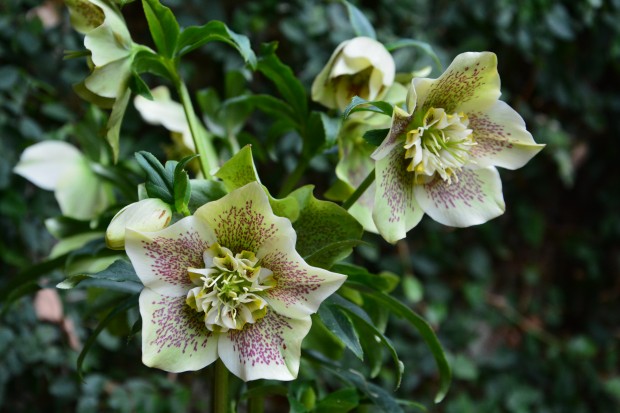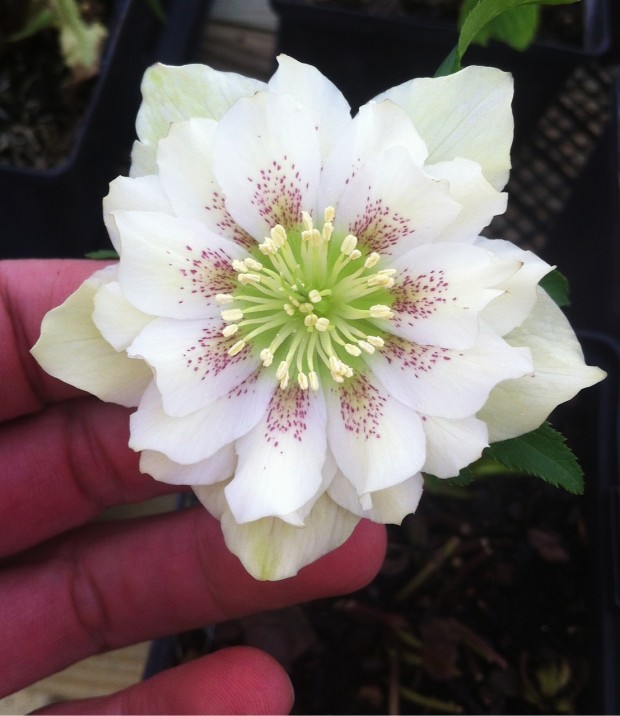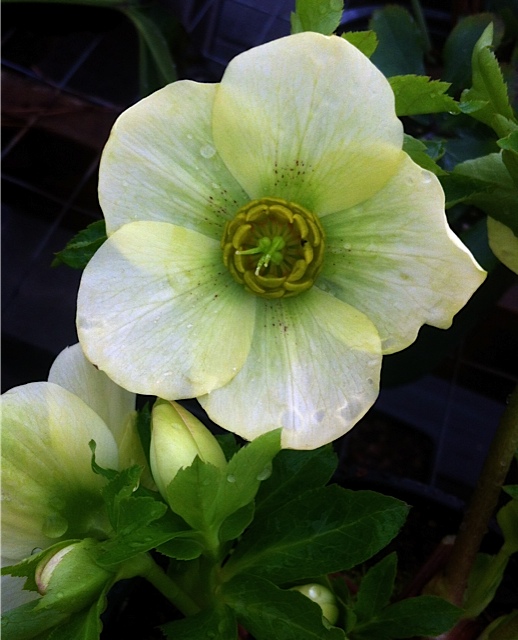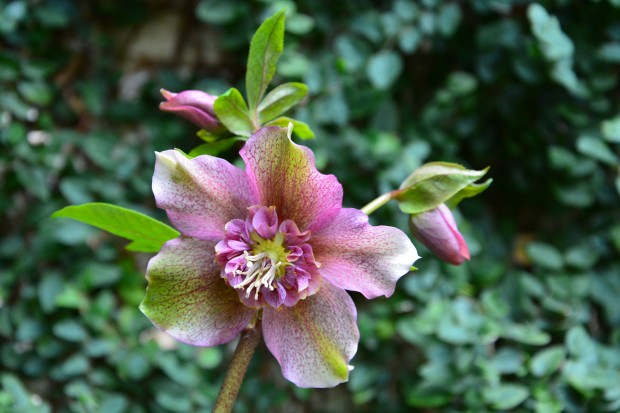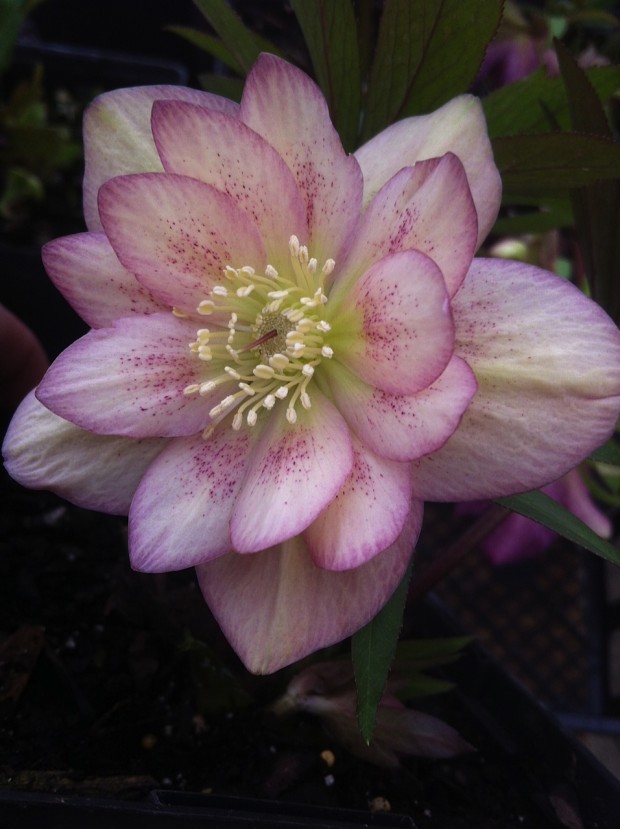Six years ago today, April 1, 2009, I published my very first post. How pleased I was to have a a forum for my gardening journal! I revisited and revised this post in 2010, 2012, and 2014. To follow is this year’s version of the essay Vernissage.
Strictly speaking, the French word vernissage refers to the opening of an art exhibition. I learned the word recently from a client with whom I have a history spanning 25 years. Our conversation over the years speaks a lot to the value of nurturing long term commitments. I have learned plenty from her, and from her garden, over the years. In the beginning, I planted flowers for her. Our relationship developed such that I began to design, reshape, and replant her landscape. She was passionately involved in every square foot of her 8 acre park. Needless to say, the years flew by, from one project to the next. I have favorite projects. An edited collection of fine white peony cultivars dating from the late 19th century was exciting to research and plant. A grove of magnolia denudata came a few years later. Another year we completely regraded all of the land devoted to lawn, and planted new. I learned how to operate a bulldozer, I so wanted to be an intimate and hands on part of the sculpting of the ground. There were disasters to cope with, as in the loss of an enormous old American elm. Deterring deer was nearly a full time job. Spring would invariably bring or suggest something new.
 In a broader sense, vernissage refers to a beginning- any opening. I would prefer to associate spring with that idea described by vernissage. This has a decidedly fresh and spring ring to it. I routinely expect the winter season to turn to spring, and it always does. But every spring opening has its distinctive features. Last year’s spring was notable for its icy debut. Grape hyacinths and daffodils ice coated and glittering and giant branches crashing to the ground. The snow that was still very much a part of the landscape in mid April. This year, a different kind of drama altogether. A cold none of us could shake. My first sign of spring was the birds singing, early in the morning-just a few days ago. I still see snow on the north side of every place. It was a bit of a shock, realizing how long it had been since I had heard the birds. Why the break of my winter this year is about hearing the singing-who knows. Maybe I am listening for the first time, or maybe I am hearing for the first time. Or maybe the birds are singing ahead of the spring. Every spring gives me the chance to experience the garden differently. To add to, revise, or reinvent my relationship with nature. This past winter was the most miserably cold I ever remember. It just about reduced my spirit to a puddle on the ground. Spring is not so close to being here yet, even though it is April 1. But I see the signs.
In a broader sense, vernissage refers to a beginning- any opening. I would prefer to associate spring with that idea described by vernissage. This has a decidedly fresh and spring ring to it. I routinely expect the winter season to turn to spring, and it always does. But every spring opening has its distinctive features. Last year’s spring was notable for its icy debut. Grape hyacinths and daffodils ice coated and glittering and giant branches crashing to the ground. The snow that was still very much a part of the landscape in mid April. This year, a different kind of drama altogether. A cold none of us could shake. My first sign of spring was the birds singing, early in the morning-just a few days ago. I still see snow on the north side of every place. It was a bit of a shock, realizing how long it had been since I had heard the birds. Why the break of my winter this year is about hearing the singing-who knows. Maybe I am listening for the first time, or maybe I am hearing for the first time. Or maybe the birds are singing ahead of the spring. Every spring gives me the chance to experience the garden differently. To add to, revise, or reinvent my relationship with nature. This past winter was the most miserably cold I ever remember. It just about reduced my spirit to a puddle on the ground. Spring is not so close to being here yet, even though it is April 1. But I see the signs.

 Much of what I love about landscape design has to do with the notion of second chances. I have an idea. I put it to paper. I do the work of installing it. Then I wait for an answer back. This is the most important part of my work-to be receptive to hearing what gets spoken back. The speeches come from everywhere-the design that could be better here and more finished there. The client, for whom something is not working well, chimes in. The weather, the placement and planting final exam test my knowledge and skill. The land whose form is beautiful but whose drainage is heinous teaches me a thing or two about good structure. The singing comes from everywhere. I make changes, and then more changes. I wait for this to grow in and that to mature. I stake up the arborvitae hedge gone over with ice, and know it will be two years or more-the recovery. I might take this out, or move it elsewhere. That evolution seems to have a clearly defined beginnings, and no end.
Much of what I love about landscape design has to do with the notion of second chances. I have an idea. I put it to paper. I do the work of installing it. Then I wait for an answer back. This is the most important part of my work-to be receptive to hearing what gets spoken back. The speeches come from everywhere-the design that could be better here and more finished there. The client, for whom something is not working well, chimes in. The weather, the placement and planting final exam test my knowledge and skill. The land whose form is beautiful but whose drainage is heinous teaches me a thing or two about good structure. The singing comes from everywhere. I make changes, and then more changes. I wait for this to grow in and that to mature. I stake up the arborvitae hedge gone over with ice, and know it will be two years or more-the recovery. I might take this out, or move it elsewhere. That evolution seems to have a clearly defined beginnings, and no end.
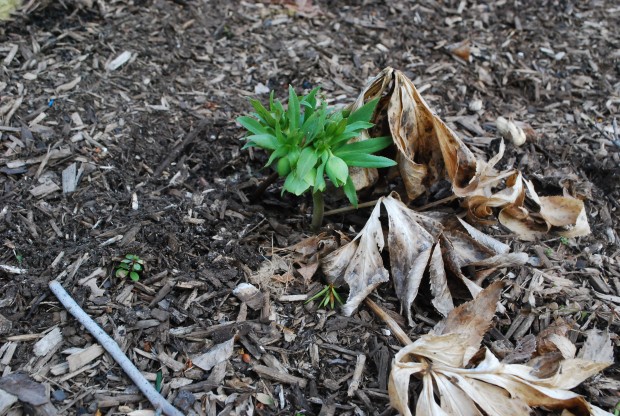 This spring will see more than anyone’s fair share of burned evergreen and dead shrubs. The winter cold was that bad. But no matter what the last season dished out, sooner or later, I get my spring. I can compost my transgressions. The sun shines on the good things, and the not so good things, equally. It is my choice to take my chances, and renew my membership. The birds singing this first day of April means it is time to take stock. And get started.
This spring will see more than anyone’s fair share of burned evergreen and dead shrubs. The winter cold was that bad. But no matter what the last season dished out, sooner or later, I get my spring. I can compost my transgressions. The sun shines on the good things, and the not so good things, equally. It is my choice to take my chances, and renew my membership. The birds singing this first day of April means it is time to take stock. And get started.
 I can clean up winter’s debris. My eye can be fresh, if I am of a mind to be fresh. I can coax or stake what the heavy snow crushed. I can prune back the shrubs damaged by the voles eating the bark. I can trim the sunburn from the yews and alberta spruce. I can replace what needs replacing, or rethink an area all together. Spring means the beginning of the opening of the garden. Later, I will have time to celebrate the shade. I can sit in the early spring sun, and soak up the possibilities. I can sculpt ground. I can move all manner of soil, plant seeds, renovate, plant new. What I have learned can leaven the ground under my feet-if I let it. Spring will scoop me up. Does this not sound good? I can hear the birds now; louder. Rob’s pot full of hyacinths that he put on a table outdoors was instantly full of bees.
I can clean up winter’s debris. My eye can be fresh, if I am of a mind to be fresh. I can coax or stake what the heavy snow crushed. I can prune back the shrubs damaged by the voles eating the bark. I can trim the sunburn from the yews and alberta spruce. I can replace what needs replacing, or rethink an area all together. Spring means the beginning of the opening of the garden. Later, I will have time to celebrate the shade. I can sit in the early spring sun, and soak up the possibilities. I can sculpt ground. I can move all manner of soil, plant seeds, renovate, plant new. What I have learned can leaven the ground under my feet-if I let it. Spring will scoop me up. Does this not sound good? I can hear the birds now; louder. Rob’s pot full of hyacinths that he put on a table outdoors was instantly full of bees.
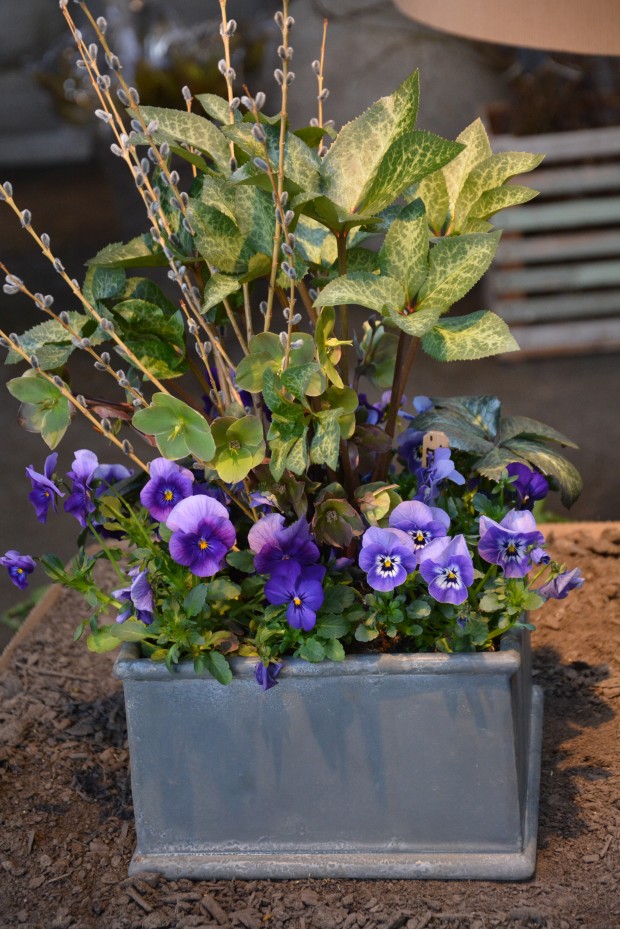
Today also marks 23 years to the day that Rob and I began working together. There have been ups and downs, but the relationship endures, and evolves. Suffice it to say that Detroit Garden Works is an invention from the two of us that reflects the length and the depth of our mutual interest in the garden. No matter how hard the winter, once we smell spring in the air, we stir. The beginning of the gardening season we short list as vernissage.
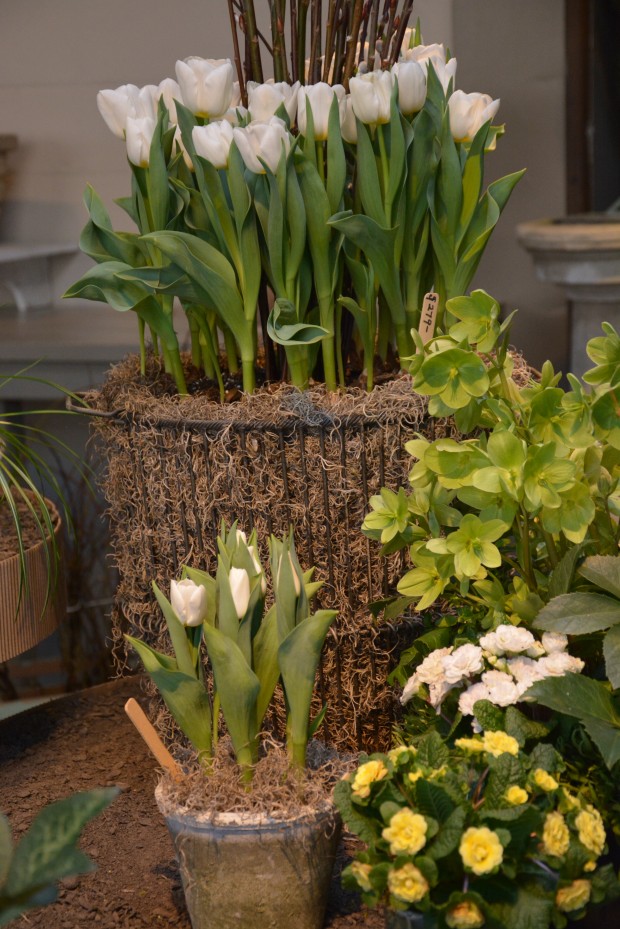 We have begun to plant up spring pots. Our pots feature hellebores, primrose, and spring flowering bulbs. What a relief to put our hands back in the dirt.
We have begun to plant up spring pots. Our pots feature hellebores, primrose, and spring flowering bulbs. What a relief to put our hands back in the dirt.
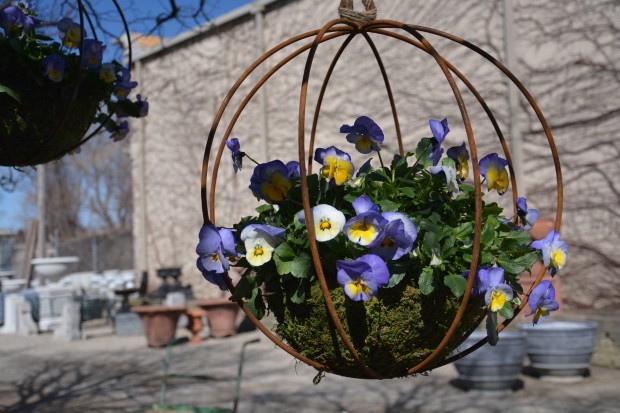 A sunny and warm day brings every gardener outside. Being outside today without a winter parka- divine.
A sunny and warm day brings every gardener outside. Being outside today without a winter parka- divine.
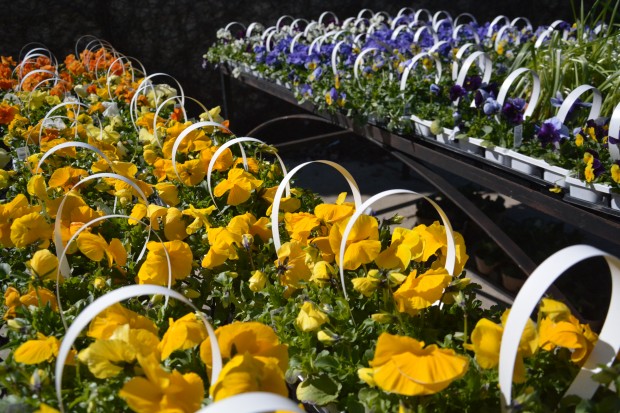 Vernissage? By this I mean spring.
Vernissage? By this I mean spring.

